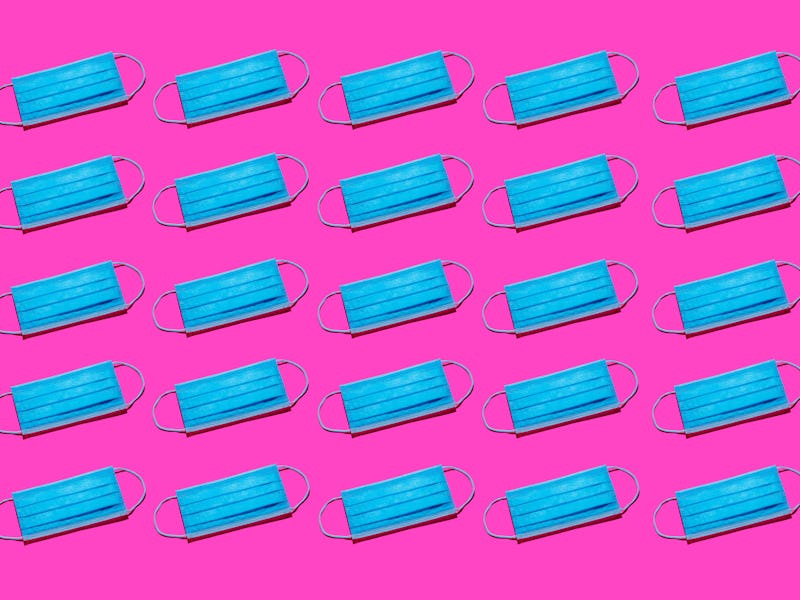A simple step could make face masks more comfortable and effective
New research into “nanowalls” could yield comfier, more effective N95s.

Since March 2020, we’ve all become a lot more familiar with face masks. This means that you’ve probably had to breathe through a mask that’s wet from sweat, rain, drool, or whatever the day brings — an experience akin to being gently waterboarded.
Damp masks aren’t just uncomfortable; they can be less effective at blocking viruses like SARS-CoV-2 and preventing illness. But a team of Korean researchers aims to solve this issue. “We propose a simple route to repel tiny droplets from the fiber,” says Myoung-Woon Moon, a materials engineer at the Korea Institute of Science and Technology in Seoul and co-author of the study.
Using a technique called plasma etching, the researchers developed a new ultra-waterproof mask that repels not only large droplets but extremely fine ones, too. The team thinks this simple technique could be used to craft the next generation of more comfortable and effective face masks. Their results were published this week in Proceedings of the National Academy of Sciences.
Plasma etching could help face masks repel tiny droplets of water and prevent illness.
Here’s the background — Plasma etching involves blasting high-energy molecules of gas (usually oxygen or tetrafluoromethane) at a material to carve extremely thin "nanowalls" into its surface. This technique is often used to craft semiconductors and circuit boards, though it’s helpful for waterproofing without relying on chemical coatings (which sometimes include toxic substances like PFAS).
But how do tiny grooves make a material repel water? Plasma etching takes advantage of water’s surface tension and natural tendency to stick to itself. When a water droplet encounters a large groove, it flows into it, filling the space. But when it encounters a fine enough groove (one on the nanoscale, in this instance), the droplet sticks to itself instead of the walls of the indent. A tiny air cushion forms beneath the droplet, effectively repelling it.
Medical face masks need to be waterproof to work well because when the fabric becomes wet, it doesn’t allow as much air to pass through. As a result, more unfiltered air escapes from the sides and bottom of the mask, making it easier for the wearer to spread viral particles.
Unfortunately, the majority of masks aren’t designed to repel extremely small droplets. And waterproofing the inside of a mask with a coat of chemicals, such as polyurethane, wouldn’t appeal to most people and could even have negative health impacts. Now, plasma etching could offer a waterproofing solution.
The technique employed in the new study is also used to make circuit boards.
What’s new — Until now, most research has focused on waterproofing masks against millimeter-sized droplets, Moon says. But, most infectious droplets are much smaller, around 1 to 30 micrometers, which wouldn’t be repelled by today’s masks.
To create their waterproof mask, the team first plasma-etched the outer layer of an N95 mask to protect it against droplets from rain, mist, or accidental coffee spills. Later, they used the same technique to etch nano grooves onto the mask’s inner layer to ward off exhaled drops.
In both cases, the plasma-etched mask repelled significantly more droplets compared to the unmodified N95s, even in humid conditions. The team also proved that the production process can be scaled up for mass distribution by creating over 100,000 plasma-etched N95s as part of their study.
What’s next — In the future, Moon hopes that his team’s plasma etching technique will become a standard mask feature. He also thinks that ultra-waterproof masks could make for a more comfortable face covering.
In fact, because plasma etching provides more waterproofing protection with less material, it could potentially open the door for slimmer, thinner, and more breathable masks.
“If we design it by considering the wettability and some wetting dynamics, we may not want to wear those thick and uncomfortable N95-type masks anymore in the next pandemic,” said Moon.
This article was originally published on